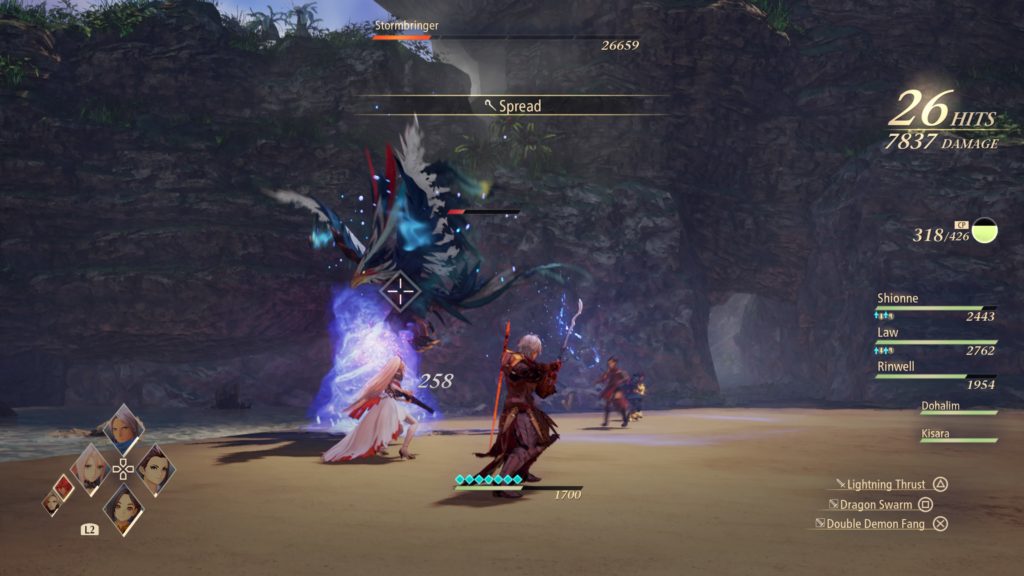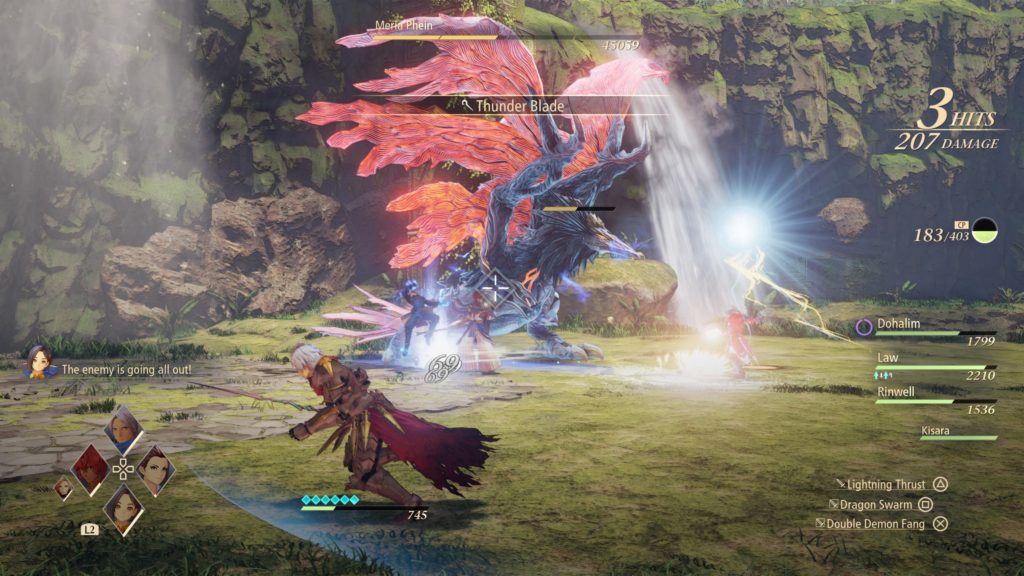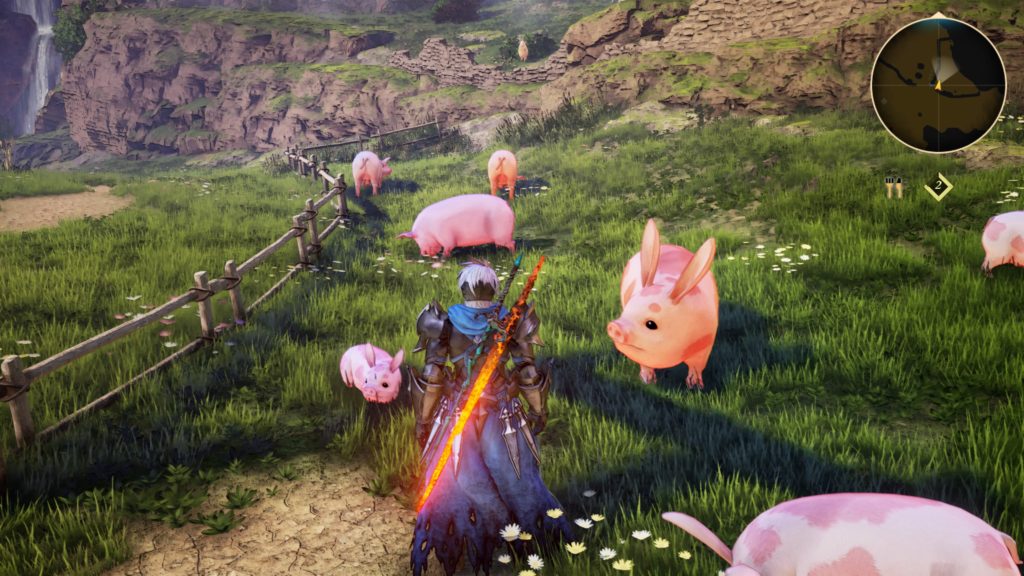- Genre: JRPG
- Platform: PS5
- Also Available On: PS4, Xbox One, Xbox Series, Windows
The Tales of series has always been one where the combat has always trumped any other problem I’ve had with the individual titles, and this one really isn’t that different. The stories of the various titles have always been fine to good but generally fall into pretty typical anime cliches, and this one isn’t really different. The presentation aspects have always been a bit behind the AAA curve and as much as this one is a huge step forward for the series, it’s still distinctly AA. Where this one again greatly succeeds is that combat is a lot of fun – and for probably the first time in the series for me, I’ve found a defensive style to actually be extremely fun while still being practical to play.

Games like Berseria started really pushing the game away from the mana-heavy skill usage of prior Tales games, and this one definitely kept that going. Where it kind of differentiates from that title is that basic attacks are split into their own chain separate from Artes. Functionally though, it’s very similar to Berseria. You attack, you try to break the enemy’s defense, and if you can break them you get a big attack and go AOE ham on the field. From an attack perspective, it still has a great flow in terms of chaining attacks with your team to keep the enemy in a hit chain and increase the chance of stunning them. In general I was able to quickly fall into a nice rhythm to where I could get in my attacks while keeping an eye out for the enemy’s incoming volley, then get out of the way as it came through.
Where this game really separates itself from the past is that it finally feels like 3D navigation is here to stay. General in-combat movement is more typical of recent action RPGs, with left stick being independent movement and right stick being the camera. It’s a small change, but it makes the game flow less like the generally fixed in/out movement of even 3D Tales games. This one also felt like it really had the biggest mindset towards defensive maneuverability in the series to me. Past titles had side stepping and that sort of thing, but the feel of it is much more natural to me. A heavy focus on dodging became part of my default toolset, rather than being an oh shit button that I used on big fights. Avoiding incoming damage and not relying on healing was a big difference for me, and it really encouraged active participation in the fights, rather than simply being a button spam with little damage mitigation.

Healing in general also went through some big changes here. Where Berseria encouraged character swapping to let characters heal out-of-combat, this one is kind of a more typical experience. You’ve got characters that are fairly traditional healer mage types. However, healing is tied to a single resource pool for the entire party. Having two healers has choice benefits, but it doesn’t have resource benefits. What it ended up doing was allowing me to bring in a dual-healer approach on bosses while using a more damage-focused party for regular combat, without really being able to cheese the game with a double mana pool for healing.
It’s an interesting change that had some ramifications on overall item and resource balance. Your typical orange+ potions that refilled MP in past games are now tied to that new resource, and given the stack limits (still 15 like past Tales titles…), double healers can burn through the resources incredibly fast. This ties all back into the damage mitigation, where reducing the need for your healers to actually use the resource becomes incredibly important.

Unfortunately, some of the negative parts of combat have been carried over as well. Put simply, the AI are incredibly stupid. They will not reliably dodge incoming attacks, even if there’s a giant obvious laser line tell going right at them. The healers will not first get away from the enemies to start the healing, even if it’s clear that they are in danger range. They do not have good target prioritization, and the tools to manage AI decision making don’t really do a good job of exposing this functionality to the player. It ends up in a situation where combat works great against single targets, then falls into chaos as more targets enter the fray. Luckily, bosses are largely party vs 1 affairs, so it’s generally not a big issue.
Some of the power curve decisions are also interesting, but I’m not sure I particularly liked them. There’s typical weapon/armor/accessory slotting, but there’s also now skill points tied into title trees. As you earn titles for doing things (ex: finishing specific character-focused side quests, doing specific activities, etc) you’ll earn the series typical titles. However, they’re now tied to four additional skills that can be purchased with SP. Earning all skills for a title will then unlock a larger passive stat boost that sums to the character.
Compared to the mastery stats on gear that Berseria used, this felt oddly boring to me. It’s an effective system, but it didn’t really encourage me to do anything. I kind of found the most useful next stat, then bought the skills for it as I could. The titles are kind of naturally gained by just playing the game normally, and you really don’t have to go that out of the way to get them all. The mastery stats in Berseria, despite being similar in practice, felt a lot more influenced by player completion than this. In that system I was still effectively building SP to get a skill but I was only getting one per piece of gear, so I was spending more time focused on making sure that I had backup gear ready when I left towns, and spent more time trying to make sure I wasn’t missing any chests that might have more gear. It’s a subtle change, but the title skills just got rid of a small stress factor that I feel really let the system down in Arise.

Overall though, this was a fantastically fun game to play. I could sit here and nitpick the story and make notes about how it was pretty cliche, but frankly I don’t play these games expecting a great story. I jump into them because I want JRPG math combined with an action-focused combat system and I got a heavy dose of that. 50 hours later, I was still enjoying jumping into battles, and if that’s the only thing I have to say coming out of a game, that’s a pretty good indication that they did it right.
